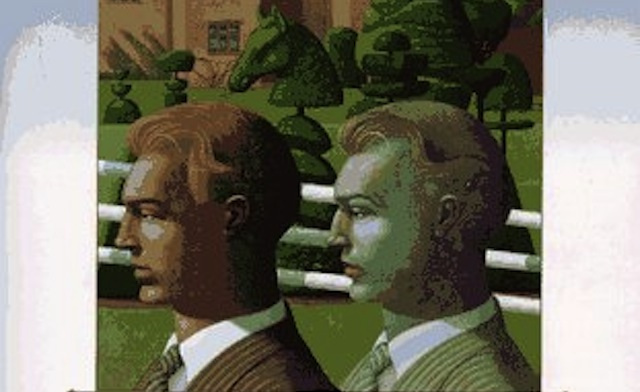Will the real Patrick Ashby please stand up?

In the opening pages of Josephine Tey’s classic mystery novel Brat Farrar (1950), a young man decides to commit a crime. The crime is impersonation and the motive is money, of course.
The young man, the eponymous Brat (a derivation of “Bart”), looks almost exactly like Patrick Ashby, who had disappeared, believed a suicide, eight years before. Patrick was the older of twins, and would have been just about to turn 21 and inherit the family estate, Latchetts, a successful horse-breeding operation. An Ashby family friend conceives of the plan. He convinces Brat to learn the details and secrets of Patrick’s life at Latchetts, “become” Patrick, and split the inheritance with his backstage prompter. Brat, drawn by a love, not of money, exactly, but of horses, and a surprisingly deep desire to just see Latchetts, appears as the long-lost heir and “returns” with reasonable fanfare to the family home.
But that’s not exactly right. The opening pages of Brat Farrar don’t focus on Brat. They take place at Latchetts, with Patrick’s aunt Bea, who had taken care of Patrick’s twin, Simon, and two younger children, Ruth and Jane, since their parents’ death in an plane crash. It is the anniversary of that day eight years ago when Patrick had disappeared and they had found a letter from him on the cliff overlooking the ocean. Bea has never understood it, and she fears that Patrick, the serious little boy, is fading from everyone’s memories. That’s because this story is not just an intricately plotted mystery, but a family story, the story of the prodigal returned, and a meditation on what can be inherited.
For the characters at Latchetts, Brat’s resemblance to what Patrick would have become is so uncanny that they cannot doubt that he is Patrick. Brat is accepted by everyone — except for Patrick’s twin Simon, whose inheritance he is stealing. Why doesn’t Simon expose Brat? And how long can Brat keep up the masquerade? Under the calm rhythms of country life is a deep pit of hate and violence. Horses are a key metaphor. Brat is drawn to Latchetts because of their horses, and he wants nothing more than to spend his life working with them, but he knows the danger: he walks with a halt because he was thrown from a horse in the American West.
A novel set among horse breeders cannot help but have heredity as a motif. That’s one thing that puzzles Brat and Brat’s Svengali. Why does Brat look and act so much like an Ashby? His love of horses, is it from some unknown Ashby blood? Why is Brat so drawn to Latchetts? None of the characters or even Tey have any doubt that heredity doesn’t lie, that families no less than horses breed true. This is not something we tend to believe today, but it’s the logic of fairy tales. Brat Farrar is a fairy tale about an orphan finding his real family masquerading as a Golden Age British mystery.
—
Suzanne Fischer is a historian and writer who lives in Detroit. She cares about people, places, and things. Find her on Twitter as @publichistorian